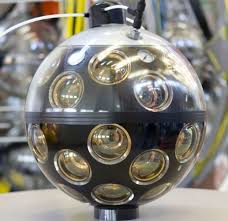When astronomers were using a gigantic network of sensors that was still under construction in the bottom of the Mediterranean Sea, they recently detected the highest-energy cosmic “ghost particle” to ever have been found.
The discovered neutrino was found to be thirty times more active than other previous neutrinos that have been detected. The mini high-energy particles from space are often described to be “ghostly” because they are very vaporous and volatile and could pass through any substances without change. Neutrinos arrived at Earth due to the further reaches of the cosmos and have nearly no mass. These particles have traveled throughout a lot of extreme environments, such as entire galaxies, stars, and planets, but their structure continues to remain whole.
The KM3NeT collaboration, involving over 360 scientists from all over the world, did an analysis of the neutrino, which was published on Wednesday, February 12, in the journal Nature. Rosa Coniglione, a researcher at Italy’s INFN National Institute for Nuclear Physics and KM3NeT deputy spokesman, said in a statement, “Neutrinos are special cosmic messengers, bringing us unique information on the mechanisms involved in the most energetic phenomena and allowing us to explore the farthest reaches of the Universe.”
According to the study authors, this record-breaking neutrino’s name is KM3-230213A, and it has the energy of 220 million billion electron volts. The impressive amount from this can make it around 30,000 times stronger than the Large Hadron Collider particle accelerator within the European Organization for Nuclear Research, located nearby Geneva, Switzerland, which is known for energizing particles until they get close to the speed of light.
In an email, study co-author, Dr. Brad K. Gibson stated, “One way I like to think about it is that the energy of this single neutrino is equivalent to the energy released by splitting not one uranium atom, or ten such atoms, or even a million of them. This one little neutrino had as much energy as the energy released by splitting one billion uranium atoms, a mind-boggling number when we compare energies of our nuclear fission reactors with this one single ethereal neutrino.”
This particle gives the first amount of evidence that high energy neutrinos could be created within the universe. The team does believe the neutrino did come from beyond the Milky Way galaxy, but have yet to identify an accurate origin point, which begs the question about what exactly formed the neutrino and sent it flying across the cosmos to begin with; maybe a dangerous environment like a supernova remnant, supermassive black hole, or gamma ray burst.
Study co-author, Paschal Coyle, a researcher at the Centre National de la Recherche Scientifique Centre de Physique des Particules de Marseille in France and KM3NeT spokesperson, stated, “The groundbreaking detection is opening up a new chapter of neutrino astronomy, as well as a new observational window into the universe.” He also stated, “KM3NeT has begun to probe a range of energy and sensitivity where detected neutrinos may originate from extreme astrophysical phenomena.”




